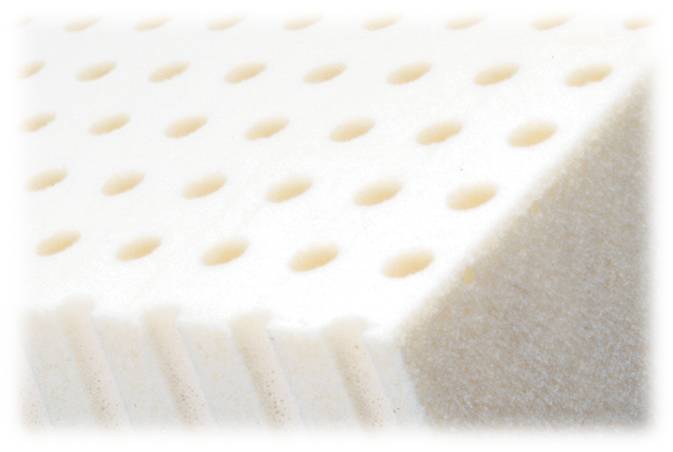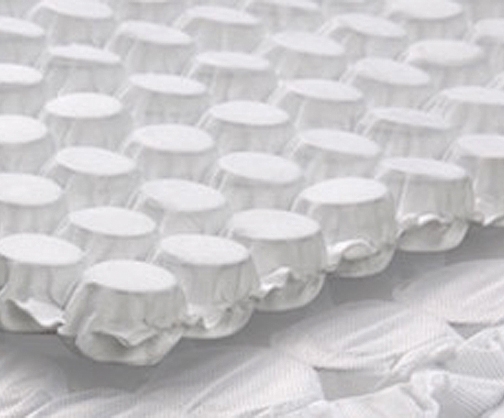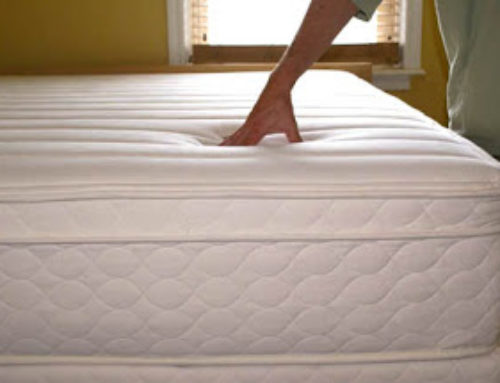We now arrive to part 3 of 3 of our What’s in a Mattress rundown. The past 2 weeks, we have discussed the mattress from the bottom up. Starting with the rock solid foundation of the frame and box, we then moved on to the bottom layer of the mattress where all your support comes from. If you have not read these over, then please look back at our previous 2 entries. This week, we come to the part that you are most familiar with, the top of the mattress. It is here where you get the initial feel from a mattress and where all the comfort comes from.
“The soft, fluffy cloud on top”
On top of the support layer lies the area where all the comfort is. Most mattresses will use foam to separate the sleeper from the firm support underneath. Over time, these foams have changed; however, all foams follow the same principles. Foam is a fickle animal, it can be as hard as a rock or soft as a cloud. Seriously, the ILD (an industry term referring to how much weight has to be put on a foam block in order to compress it 25%) ranges from 1-60. 60 being the hardest foam and 1 being the softest. However, this does not tell you how long the foam will last. In order to determine that, you need to learn what the Density of the foam is. Density, in this case, refers to how much of the material is foam and how much is air. The higher the density, the more foam is in the material, and the longer it will last. While we discuss the foams below, we will also discuss what a good minimum density is per foam for longevity.
Convoluted Foam

Memory Foam

Convoluted Foam
Convoluted foam, sometimes referred to as eggcrate foam due to its’ egg crate style look, is the most traditional foam still in use today. This type of foam is also similar to ones used in couches and recliners. Convoluted foam provides some cushion between you and the support layer. National standard density for this foam is 1.1 or 1.2. However, these have too much air in them and will break down fast. The minimum density recommended for this foam is 1.8 or higher.
Memory Foam
Memory foam was the next evolution for the comfort layer. The benefit of memory foam is that it uses your body heat to conform to your body. This helps reduce pressure points on shoulder, hips, heels, back, and stomach depending on which way you lay on the mattress. The other benefit is that memory foam also reduces motion transfer from side to side. The one main detractor to memory foam is that it sleeps hotter than convoluted foam. This is because after memory foam uses your body heat, it transfers it back up to you. Most manufacturer’s now add gel to the memory foam in order to retain the heat. The best type for these is gel infused because the gel is added in the process of making the foam so it is throughout the material. Memory foam, by its’ design, needs to be more dense than convoluted foam. The minimum density for a memory foam should be 4.0.
Latex foam
The next advancement in the comfort layer was latex foam. Latex retains the benefits of pressure relief and is a more Eco-friendly type memory foam. This foam is created using recycled rubber or made straight from the rubber tree. There are several other benefits to latex foam as well. One, latex foam sleeps cooler than standard memory foam because it does not use your body heat to conform to your body. Two, latex foam conforms to your body faster than standard memory foam. This helps to reduce a “sinking” feeling that some people have with memory foam. Three, latex foam lasts longer than any other type of foam in production today. This is due to the fact that it is the most man made foam. Also, latex foam has a tighter knit cell structure which means that it takes longer for it to break down. One concern with latex foam is those with a latex allergy. However, most manufacturer’s burn off the allergens that are associated with latex allergies in the construction. Check with your doctor and the manufacturer to see if they offer these types of foams before purchasing. Latex foam also does not need to be as dense as standard memory foam due to its’ construction with a 3.0 minimum density recommended.
Latex Foam

Micro Coils

Micro Coils
The most recent addition to the comfort layers is Micro Coils. The idea behind them is to use a layer of small pocketed coils on top of the existing support layer. These smaller, “micro,” coils conform to your body like the pocketed coil support layer. This helps to reduce pressure points as well as reduce motion transfer. Benefits to micro coils include being cooler than all foam comfort layers and good longevity.
Micro coils are cooler than foams because they allow more air flow. As we discussed before, good foams have little to no air in them. Therefore, they do not have much air flow to keep things cooler. Micro Coils have more airflow than any of the foams. In addition, micro coils have good longevity because they are made with steel springs.
The comfort layer is the part of the mattress set that you are in direct contact with. They can provide a soft cloud feel or a rock hard feel depending on their ILD and what support layer they are combined with. The most important thing to remember after reviewing the parts of the mattress system is that no two mattresses are alike. In order to find the right mattress for your needs, you need to lay down on the mattress for 10 to 15 minutes. Many specialty bedding stores (like ours) have trained staff to help find the right mattress for your needs as well.
Thanks!
Adam Swift
Long’s Furniture World and Mattress
P.S. Check out these other articles for more information about different comfort layers and which one is right for you.
https://www.themattressunderground.com/mattresses/comfort-layers.html




